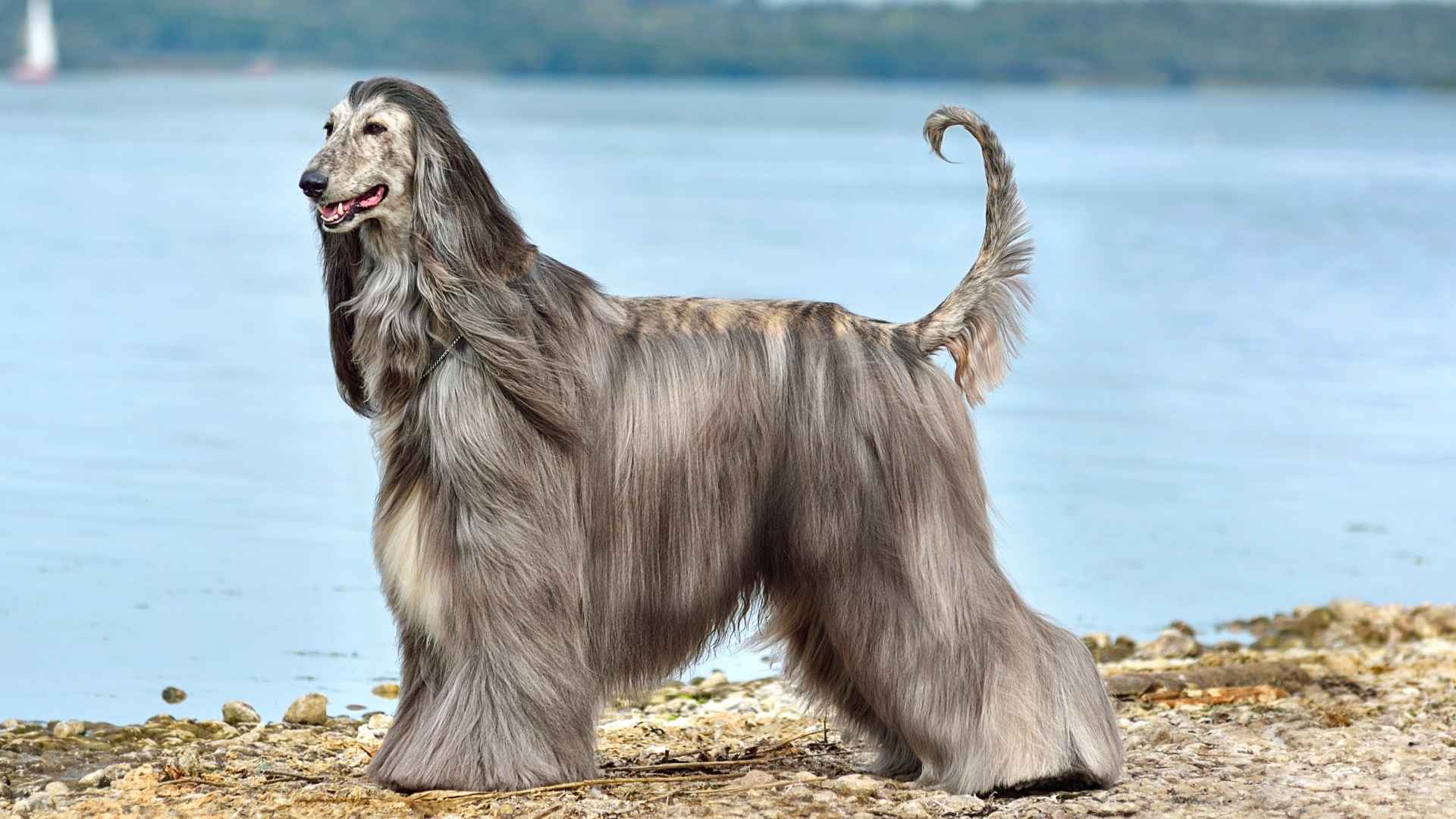Being allergic to dogs can feel like a cruel twist of fate—your heart says yes to wagging tails and floppy ears, but your immune system throws a fit. If you’ve ever dreamed of cuddling a pup without the endless sneezing, itchy eyes, or runny nose, we’ve got some good news.
While no dog is completely hypoallergenic, some breeds produce less dander, hair, and saliva, which means they’re less likely to trigger those frustrating allergy symptoms. These are the dog breeds with low allergy risk, and they just might be the key to finally bringing home a furry friend.
Whether you’re dealing with mild sniffles or severe allergic reactions, these pups offer a cleaner, more comfortable companionship. Think fewer tissues, more tail wags!
In this blog, we’ll guide you through some of the best hypoallergenic dog breeds out there, so you can stop dreaming and start planning your new best friend’s welcome home party.
Dog Breeds With Low Allergy Risk
1. Afghan Hound
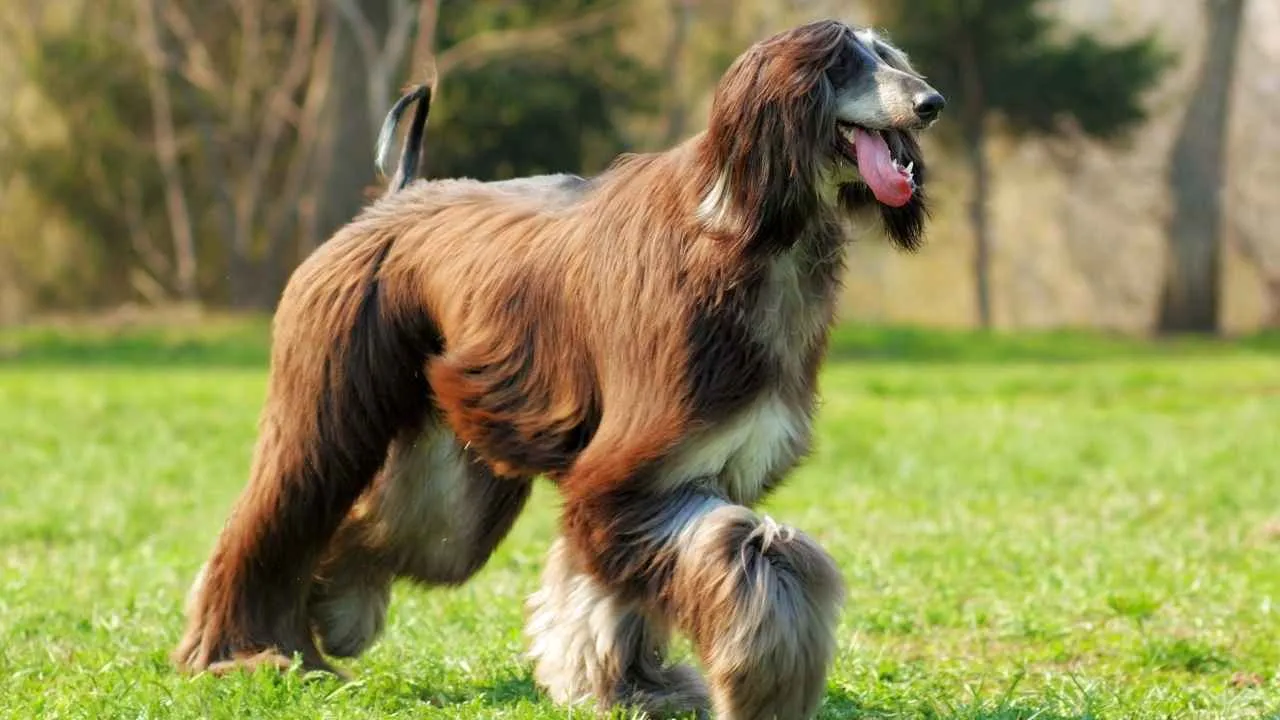
With elegance in every step and a flowing, silky coat that demands attention, the Afghan Hound is among the most glamorous of dog breeds. Originally bred in Afghanistan to hunt game like deer, gazelle, and hares, these agile sighthounds were built for speed and stamina across both desert and mountainous terrain.
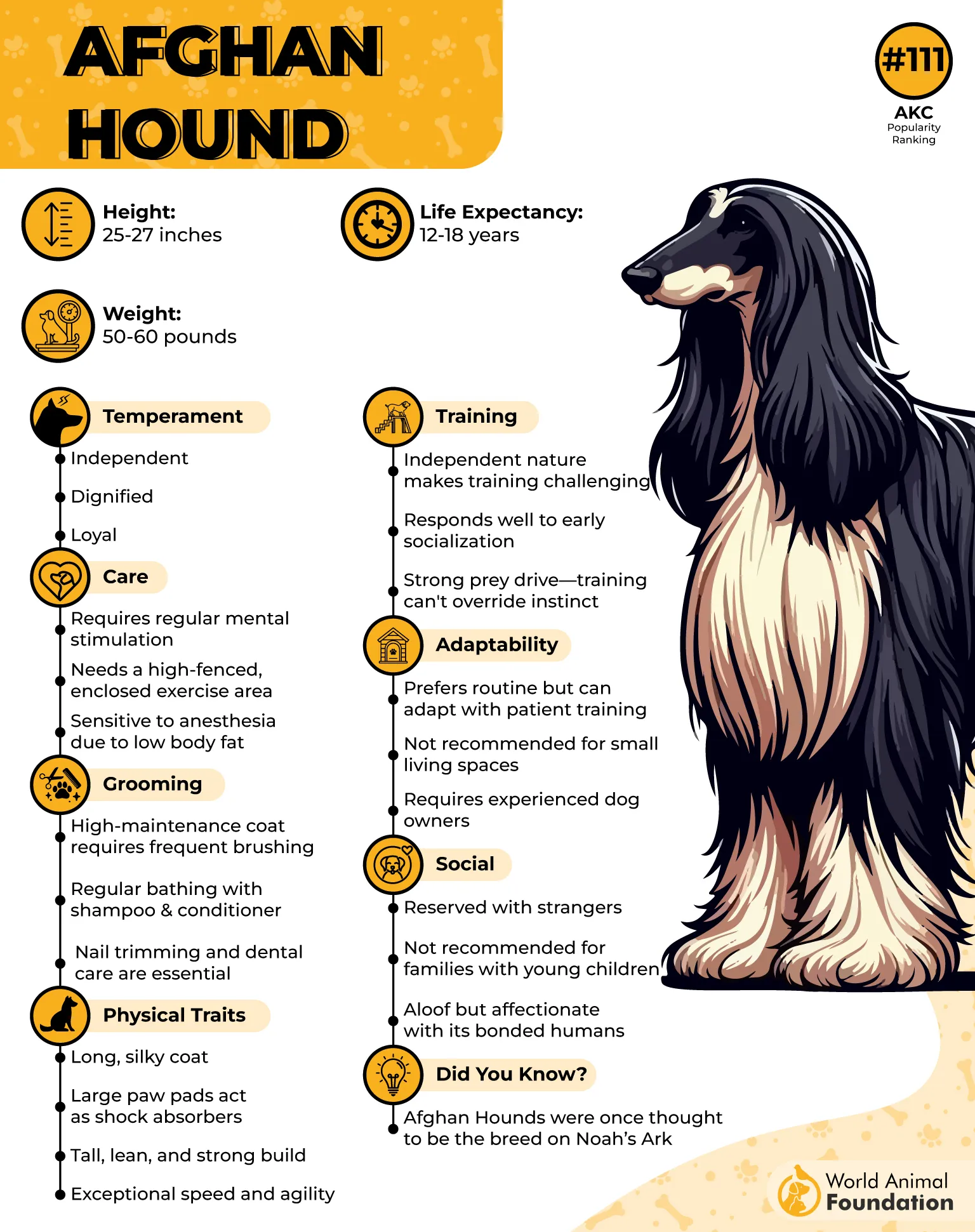
Medium to large in size and slender in build, Afghan Hounds are known for their striking appearance and proud carriage. But beneath the beauty is a self-assured, independent spirit.
While their roots are in Afghanistan, where they were called “Tazi,” today’s Afghan Hounds mostly trace back to early 20th-century Britain.
Despite their glamorous coat, Afghan Hounds shed very little and have no undercoat, which helps trap dander and makes them a better option for allergy-sensitive households. However, their coat does require regular brushing—several times a week—to stay smooth and mat-free. Baths are only needed occasionally.
Beyond coat care, grooming includes regular ear cleaning due to their long ear hair, which can trap moisture and cause infections. Many owners tie up the hair on the dog’s head to keep it out of their food and away from the ears. Nail trims and basic dental hygiene round out their care routine.
Afghan Hounds exude grace and presence, often drawing stares with their upright posture and silky hair. But they’re not just about looks—this breed can be stubborn, lazy, and delightfully silly when the mood hits, making them both elegant and endearing companions.
2. American Hairless Terrier
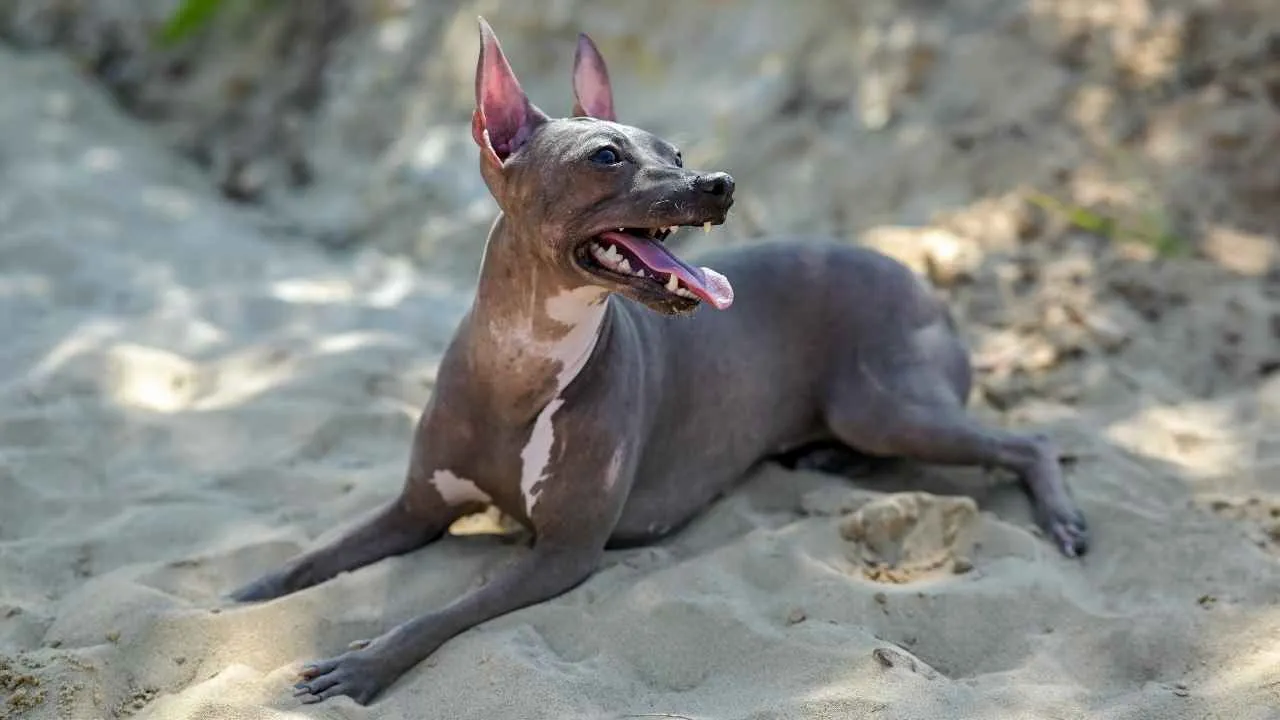
The American Hairless Terrier (AHT) is a small to medium-sized dog breed known for its lively personality, intelligence, and affectionate nature. Completely hairless—aside from a few whiskers—these energetic dogs stand out for both their appearance and trainability.
Descended from the Rat Terrier, the AHT shares strong hunting instincts but isn’t built for outdoor tracking due to its lack of a protective coat. Still, it shines in dog sports like agility, obedience, and trick training, thriving on mental challenges and interactive play, states the AKC.
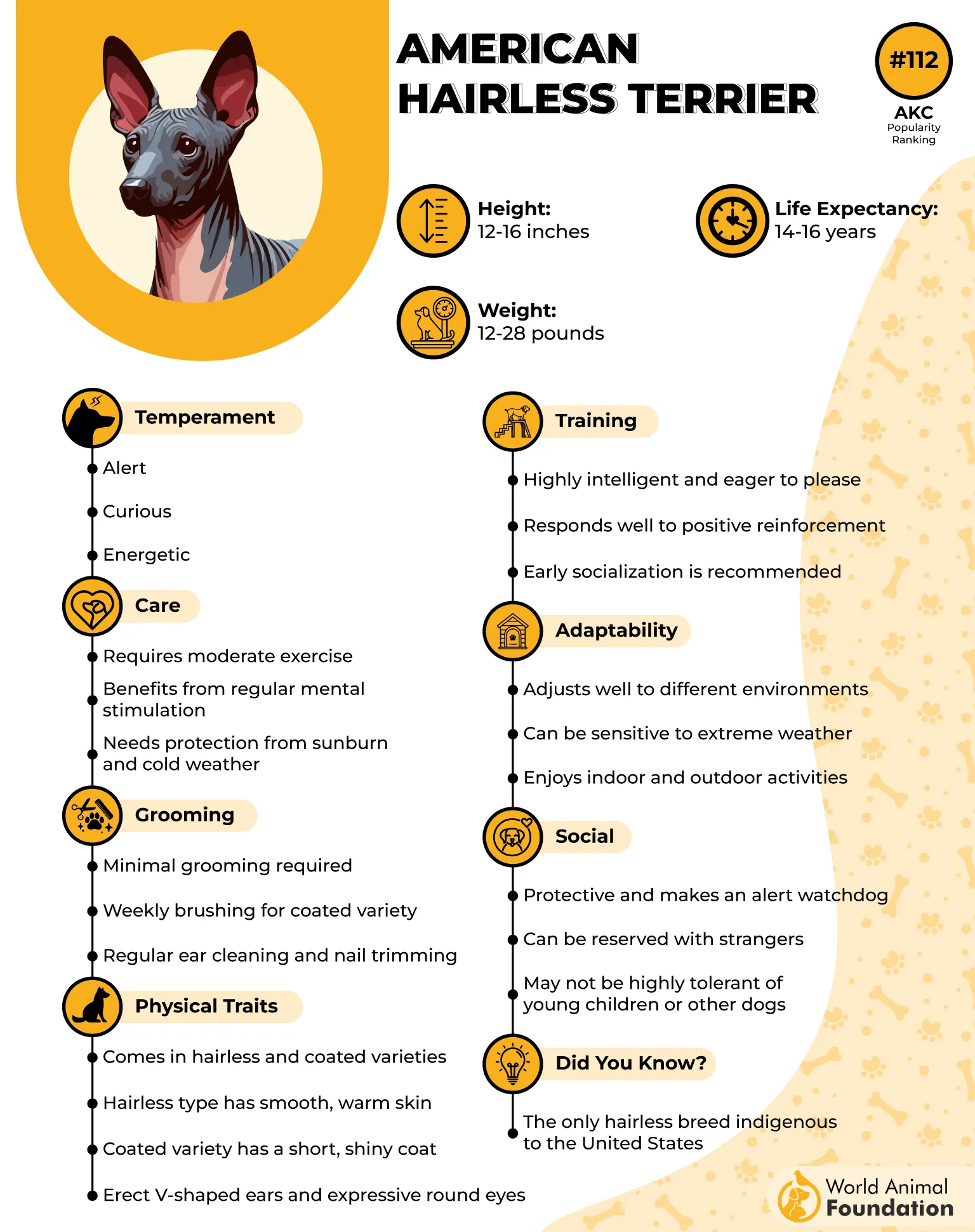
There are two types within the breed: hairless and coated. The coated version, called the “Coated Carrier,” has a short, smooth coat but carries the hairless gene. Hairless puppies are born with a soft fuzz that falls out by 8 to 10 weeks, leaving their skin smooth and bare.
Grooming is simple, but their skin requires attention. Regular baths keep them clean, ears should be gently wiped, and nails trimmed as needed. Because they lack fur, sun protection is essential—use dog-safe sunscreen or lightweight clothing during outdoor time.
As the first hairless breed developed in the U.S., AHTs are unique for having no body hair at all—not even on the head or tail—and a full set of teeth, setting them apart from other hairless breeds like the Chinese Crested or Xoloitzcuintli.
3. Bedlington Terrier
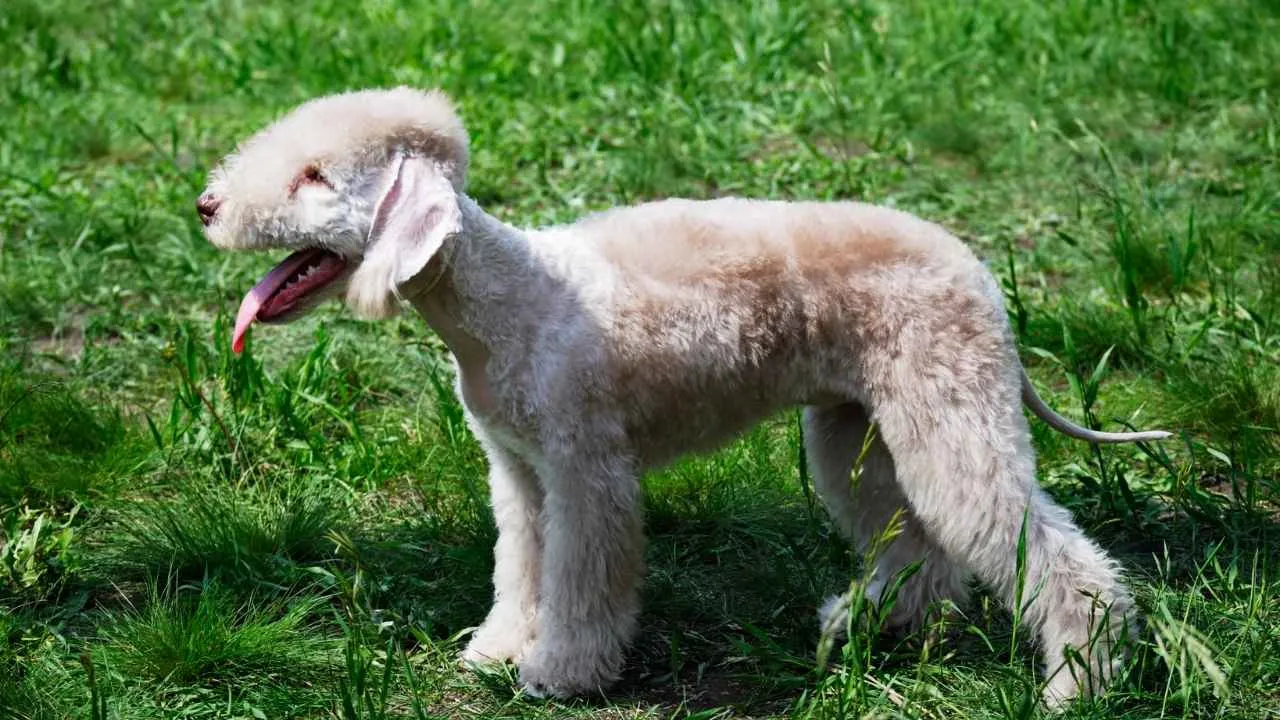
The Bedlington Terrier is one of the most distinctive-looking dog breeds, often compared to a lamb thanks to its curly coat, arched back, and elegant stride. Its pear-shaped head, topped with a fluffy topknot and narrow muzzle, gives it a graceful, almost whimsical look that stands out in any crowd.
Originally bred in early 19th-century England, the Bedlington hails from the mining town of Bedlington, Northumberland. Known then as the Rothbury Terrier, it was a trusted companion of gypsies and miners for hunting vermin like rats and foxes.
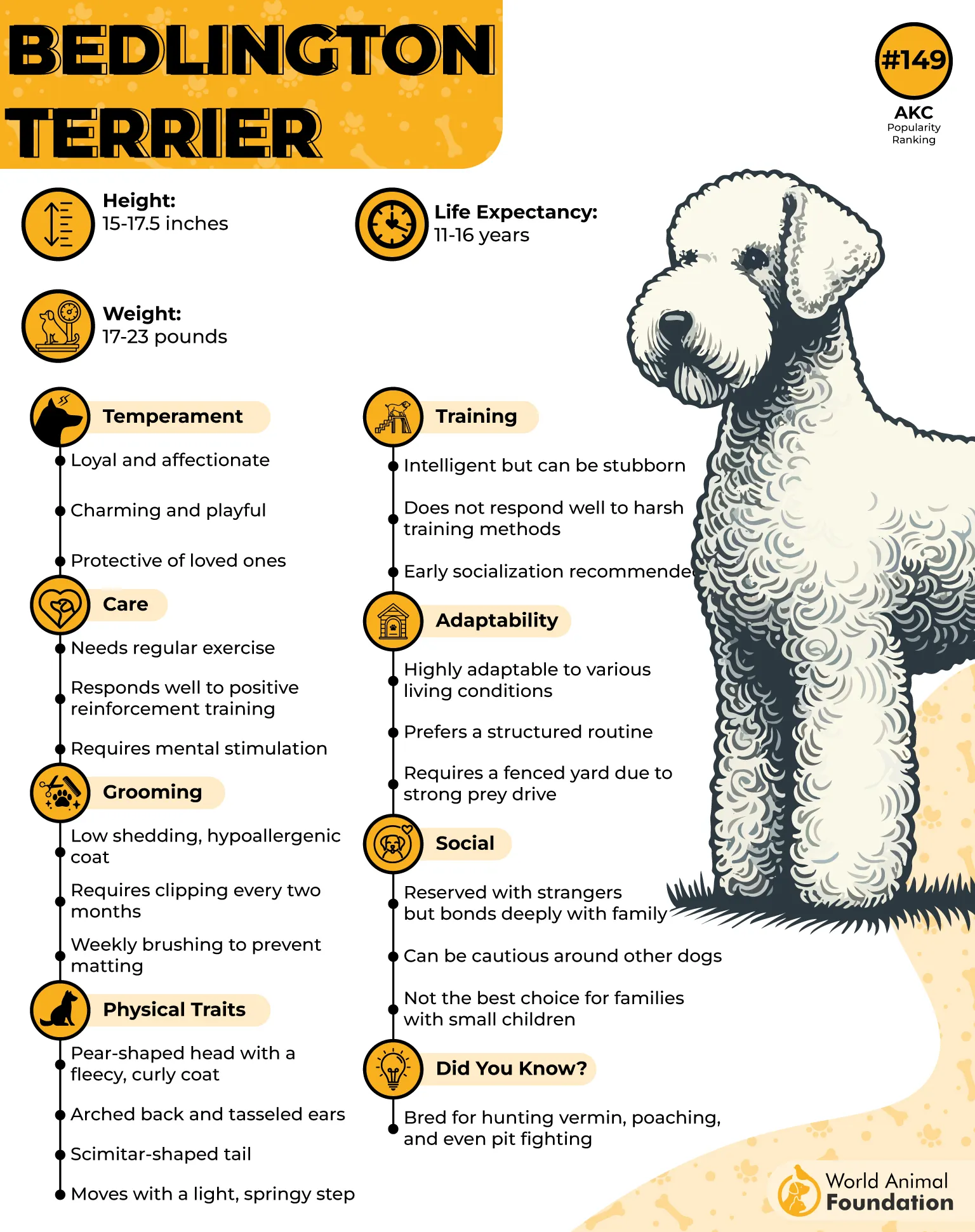
Despite their soft appearance, Bedlington has a bold and confident personality. They’re affectionate and loyal, usually good with kids, but like most terriers, they have a strong will and a high prey drive. Early socialization is key, especially in multi-pet households, states Hillspet.
These energetic dogs require mental stimulation and ample exercise. They’re surprisingly fast and love chasing toys or running in open spaces. With enough activity, they adapt well to apartment living and make affectionate, entertaining companions.
A big bonus for people with dog allergies, Bedlington Terriers are considered one of the top hypoallergenic breeds. Their low-shedding coat and minimal dander make them a popular pick for pet parents with sensitivities. No dog is 100% hypoallergenic, but this breed comes close for many people.
4. Bichon Frise
The Bichon Frise is a bundle of joy wrapped in a fluffy white coat. Cheerful, affectionate, and playful, these little entertainers love being the center of attention—a trait that likely stems from their history as circus performers. Smart and eager to please, they thrive on companionship and enjoy learning tricks to charm their humans.
Though they’re alert and lively, Bichons are more likely to greet strangers with tail wags than barks. Their friendly nature and gentle demeanor make them excellent therapy dogs, bringing comfort and cheer wherever they go, states Petplan.
Bichons have a playful energy that’s easy to manage. They enjoy bursts of activity but are just as content snuggling indoors. However, they form strong bonds and dislike being left alone for long periods, which can lead to anxiety and unwanted behaviors like chewing or accidents.
Early training and socialization help shape their sweet temperament. They make loving family pets, especially in homes where someone is around most of the day to provide attention and structure.
One of their standout features is their low-shedding, hypoallergenic coat that traps pet dander and loose hair. However, it is important to note that even the pet hair, dog saliva, and dead skin cells can trigger allergies. Daily brushing and routine grooming help maintain their soft, fluffy look and keep tangles at bay.
5. Chinese Crested
The Chinese Crested is a quirky, eye-catching toy breed that comes in two varieties: hairless and powderpuff. The hairless type has mostly bare skin with tufts of hair on the head, tail, and feet, while powderpuffs are fully coated in a soft, silky double coat that gives them a fluffy, elegant look, states Britannica.
Though their origins are uncertain, many believe the breed began in Africa and was later popularized by Chinese sailors.
Interestingly, both coat types can appear in the same litter, thanks to a dominant hairless gene that can only be passed in a specific form to avoid fatal outcomes in puppies.
Chinese Cresteds are affectionate and playful, forming strong bonds with their humans. They thrive in calm, loving environments and respond best to gentle, positive training methods. Due to their small size and delicate build, supervision around young children is recommended.
Grooming depends on the type. Powderpuffs need regular brushing to prevent matting and odor, while the hairless variety requires diligent skin care. Their exposed skin is prone to sunburn, dryness, and acne, so gentle moisturizers and sunscreen are essential.
6. Coton de Tulear
The Coton de Tulear is a cheerful little companion from Madagascar, best known for its soft, fluffy, cotton-like coat. Usually pure white, their medium-length fur can be slightly wavy or curly, giving them an irresistibly cuddly appearance. While related to breeds like the Bichon Frise and Maltese, the Coton has a distinctly affectionate and playful personality.
Loyal and people-oriented, Cotons form strong bonds with their families. They’re friendly with children, other pets, and even strangers, making them a great fit for a variety of households. These dogs love to stay close and will happily follow you from room to room, content just to be near their people.
Though playful and alert, Cotons aren’t known for excessive barking. They’ll alert you to something unusual but tend to “talk” in softer, more expressive ways, like head tilts or quiet vocalizations that many owners find endearing.
As a hypoallergenic breed with minimal shedding, the Coton may be suitable for some of those prone to pet allergies. However, their long, dense coat does require consistent grooming. Brushing several times a week helps prevent mats, especially around the ears, legs, and elbows.
Bathing needs depend on how active they are and how often they’re brushed. Regular grooming keeps their coat clean and reduces the need for frequent baths.
7. Irish Water Spaniel
The Irish Water Spaniel is the tallest of the AKC-recognized spaniels, standing 21–24 inches and weighing 55–65 pounds. With a lean, athletic build, a smooth, effortless gait, and a distinct liver-colored curly coat, this breed is both eye-catching and capable in the field. Its rat-like, tapered tail adds to its unmistakable silhouette.
Bred in Ireland for retrieving waterfowl, this spaniel is a natural swimmer. Webbed feet and a water-resistant double coat help it glide through water with ease, whether retrieving game or just having fun at the lake or beach.
Irish Water Spaniels are intelligent and thrive on training, structure, and activity. They bond closely with their people, often favoring one person, and do best in homes where they get regular interaction and a job to do.
Often called the clown of the spaniel world, this breed is playful, affectionate, and always up for a good time. While friendly with family, they can be reserved with strangers and may show protective instincts.
The coat is dense and curly, typically a rich liver shade with a hint of purple. While most of the body is covered in tight curls, the face is smooth, and the long topknot, shaggy beard, and sideburns add to the breed’s signature charm.
Irish Water Spaniels are intelligent and thrive on training, structure, and activity. They bond closely with their people, often favoring one person, and do best in homes where they get regular interaction and a job to do.
8. Kerry Blue Terrier
There’s something effortlessly dashing about the Kerry Blue Terrier. With its signature blue-gray coat and jaunty beard, this breed stands out in the show ring. But beneath that polished look is a classic terrier—clever, energetic, and fearless.
In Ireland, where they’re affectionately called Irish Blue Terriers, they’ve long been prized for their versatility as both show dogs and working farm companions.
Kerry Blues are medium-sized and muscular, making them one of the larger terriers. Their soft, wavy coat comes in shades of blue-gray and is known for being low-shedding. Puppies are born black and gradually lighten to their mature color by 18 months. They are considered hypoallergenic, as they produce fewer allergens.
Beyond looks, Kerry Blues are affectionate and thrive on activity. They form strong bonds with their people and love staying busy—whether it’s hiking, agility, or dock diving, this breed wants to be part of the action.
They do well with children when socialized early and given clear boundaries. Since they can be wary of other dogs, early introductions and positive experiences are key. With consistent training and an active lifestyle, the Kerry Blue Terrier becomes a loyal and spirited companion.
9. Lagotto Romagnolo
The Lagotto Romagnolo is a curly-coated charmer from Northern Italy, originally bred for duck hunting and later celebrated for truffle hunting. Medium-sized and affectionate, this breed is a great fit for active families or experienced dog owners.
Smart and eager to learn, Lagottos thrive on training and love having a job to do. Activities like agility or scent work help channel their energy and intelligence. Without enough stimulation, they may turn to mischief, so keeping them mentally engaged is key.
Despite their working background, Lagottos are loving and loyal. They’re gentle with kids, devoted to their families, and enjoy a good cuddle after playtime. With the right balance of activity and affection, they make versatile companions for many lifestyles.
Their dense, woolly coat is water-resistant and low-shedding—ideal for people with allergies. They are not completely allergen-free, but they shed minimally. Regular grooming is essential to prevent matting, and many owners opt for a shorter trim during warmer months.
Conclusion
Choosing the right dog can make a big difference for allergy-prone individuals. While no breed is entirely hypoallergenic, dog breeds like the Portuguese Water Dog, Soft Coated Wheaten Terrier, Shih Tzu, and Giant Schnauzer produce fewer pet allergens. Their wiry coats, silky coats, or soft undercoats trap dander and shed less, helping reduce allergic reactions.
Regular grooming plays a key role in managing allergens. Brushing and bathing your dog regularly, cleaning your dog’s bedding, and using air purifiers can minimize exposure to both indoor dander and outdoor allergens.
Many of these great hypoallergenic dogs, like the Miniature Poodle, Maltese, or Cairn Terrier, also have easy-to-maintain coats that support cleaner living.
Compared to heavy shedders like the Labrador Retriever or Golden Retriever, these lower-risk breeds offer a more comfortable option for allergy sufferers. With the right care and breed choice, living with a dog can be a joy, not a sneeze.


